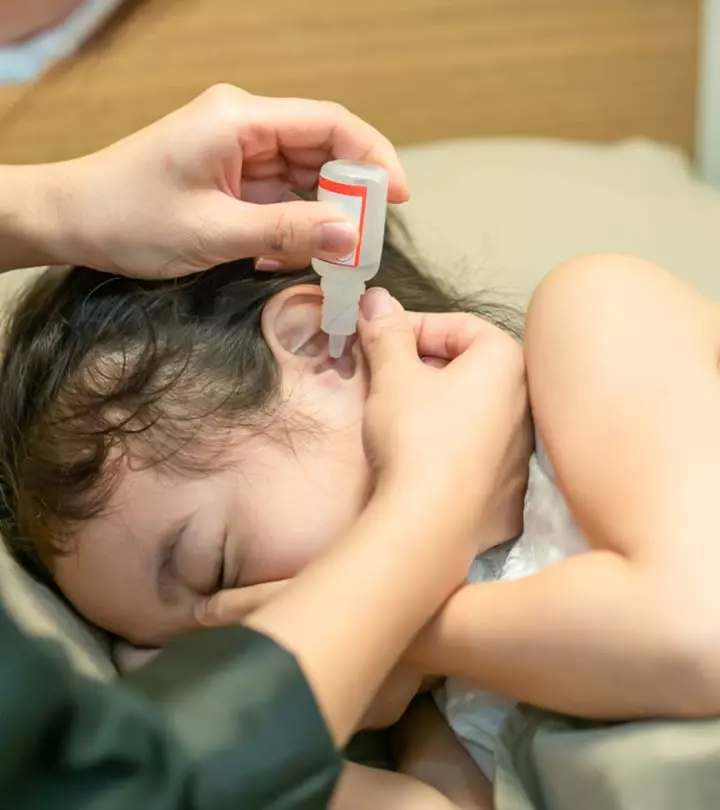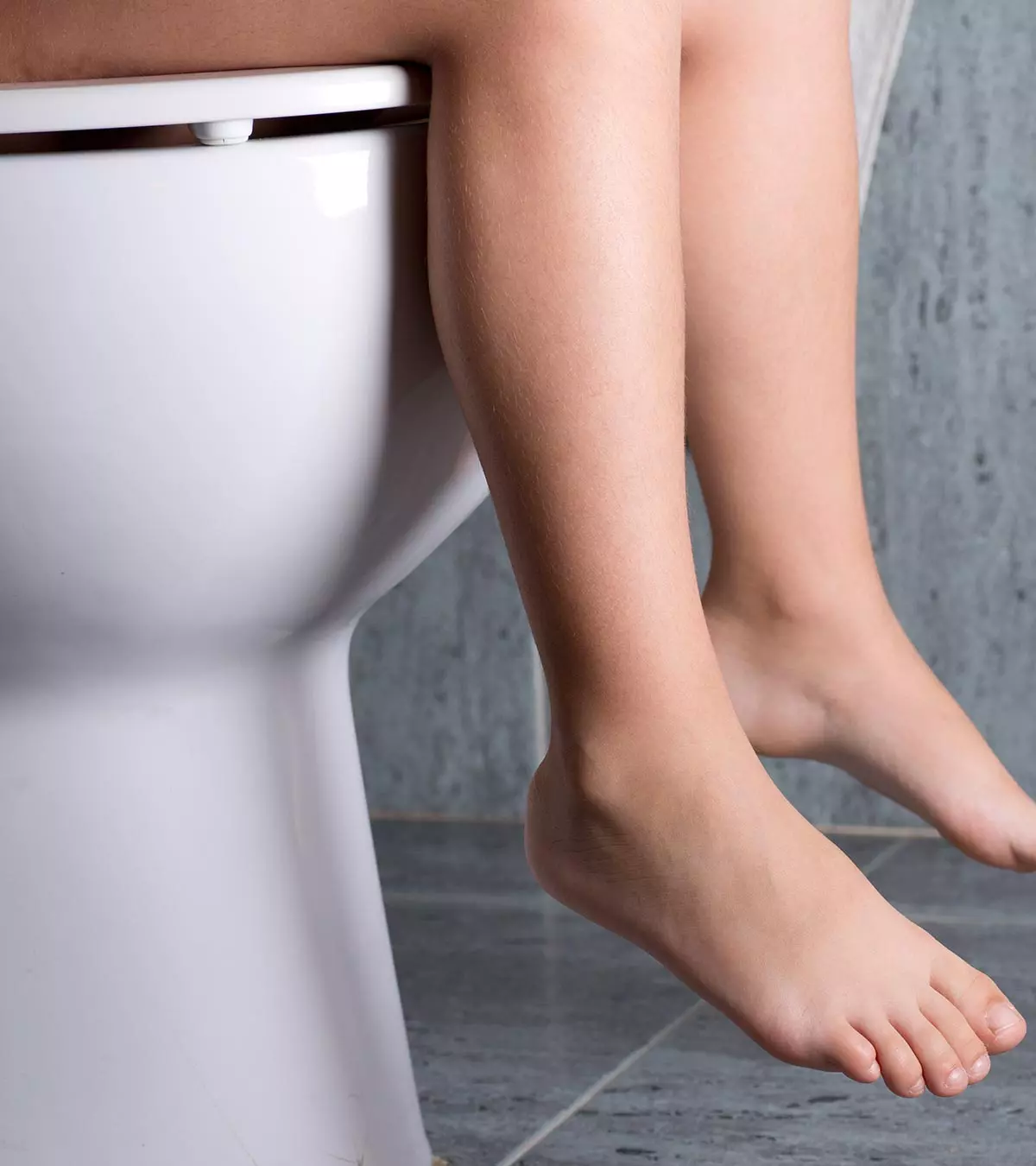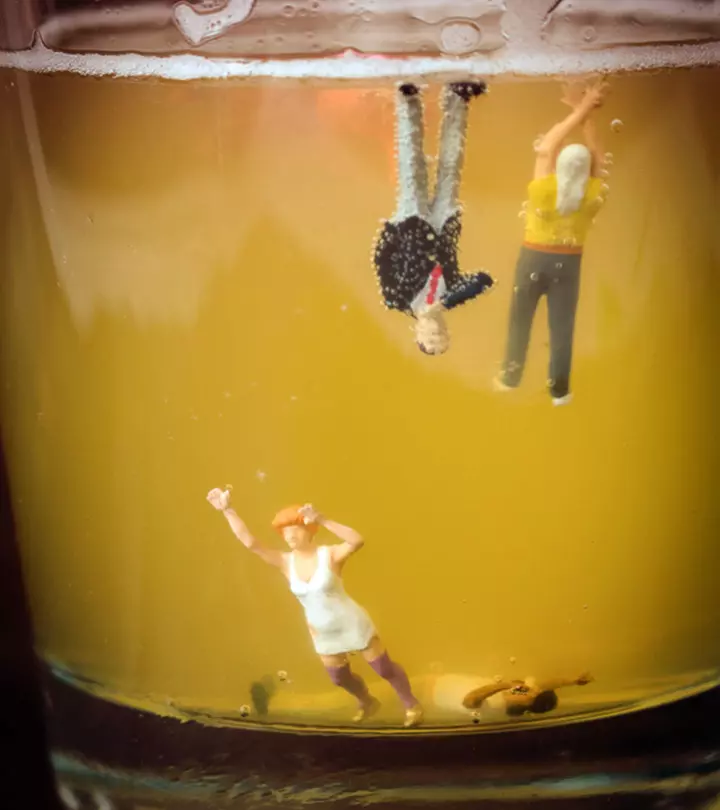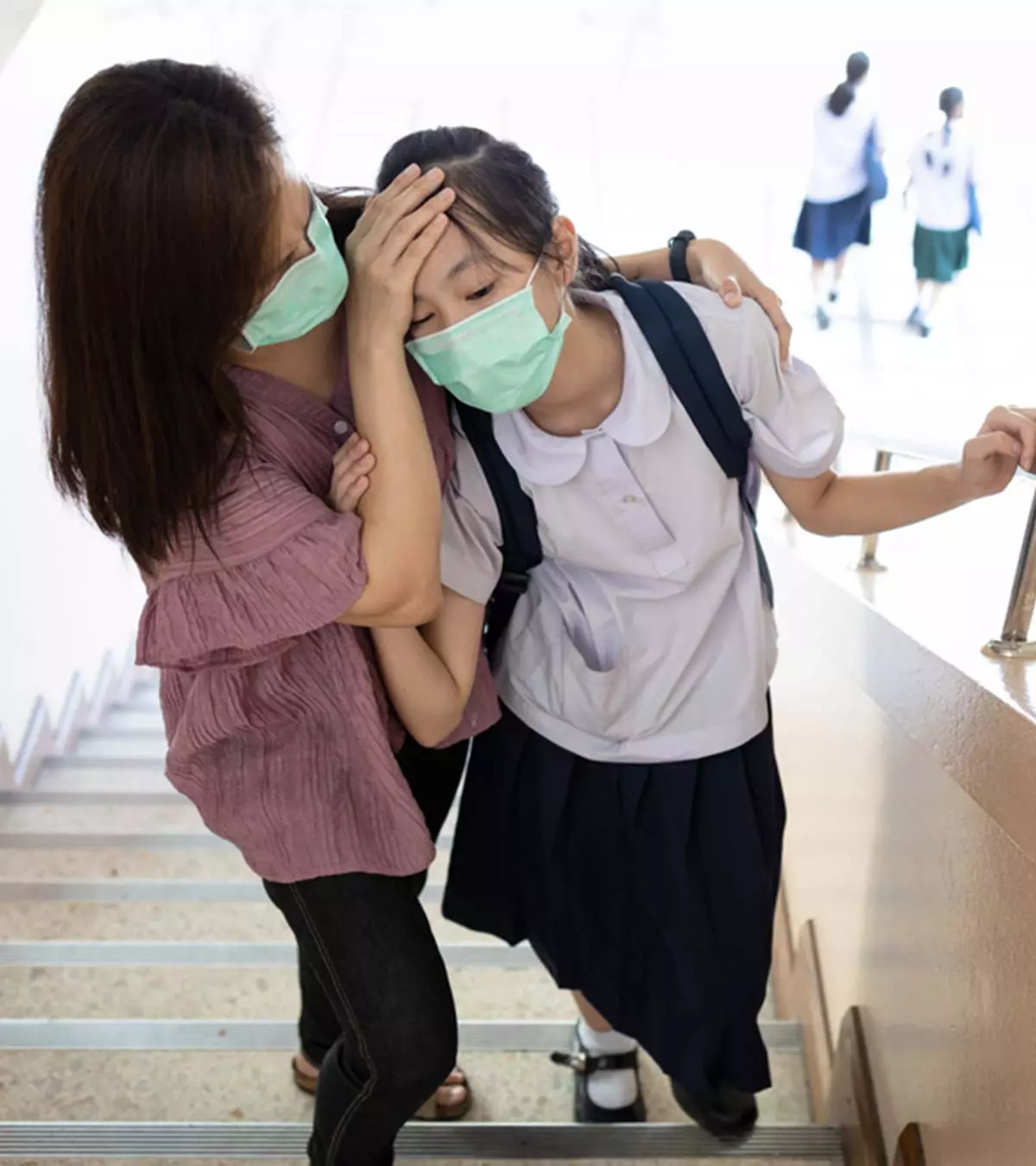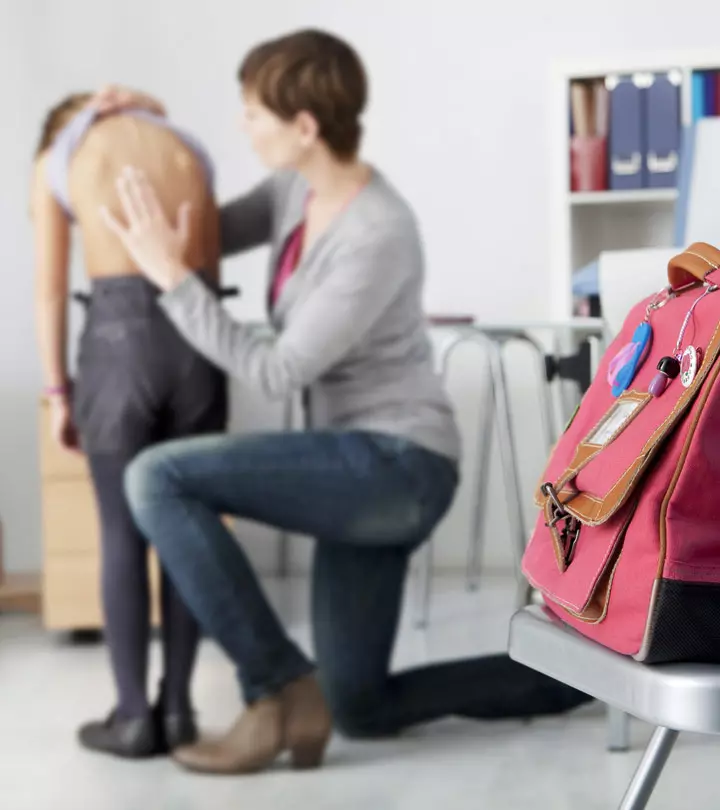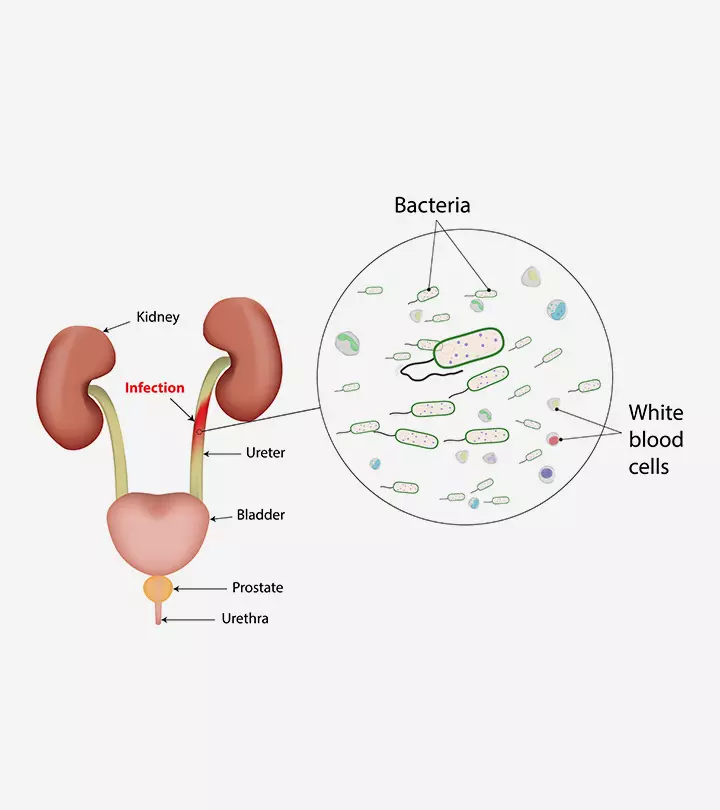
Image: Shutterstock
Urinary tract infection generally refers to a bacterial infection in the urinary tract and associated structures such as the urinary bladder, urethra, or kidneys. Urinary tract infections in teens may result in pain and discomfort if it involves only the lower urinary tract (urinary bladder and urethra). On the other hand, upper urinary tract infections may affect the ureters and kidneys and may have serious consequences. However, advanced infections are not as common as lower urinary tract infections. In this post, we discuss the causes, risk factors, signs, and symptoms of urinary tract infections. Diagnosis, treatment options, and preventive measures are also included.
Key Pointers
- Escherichia coli (E.coli) bacteria cause 90% of Urinary Tract Infections (UTIs).
- The risk factors for developing UTI are the anatomy of the urinary system, low immunity, poor water intake, urinary tract abnormalities, and urinary procedures.
- Some symptoms of UTIs include fever, chills, abdominal pain, nausea, vomiting, frequent urination, pelvic pain, dysuria, and foul, milky urine.
- Untreated UTIs can cause recurrent infections, acute or chronic kidney infections, permanent kidney damage, urethral stricture in boys, and sepsis.
- Preventive measures for UTIs include following proper hygiene, increasing water intake, consuming cranberry juice, and avoiding irritating feminine products.
Causes Of Urinary Tract Infections In Teens
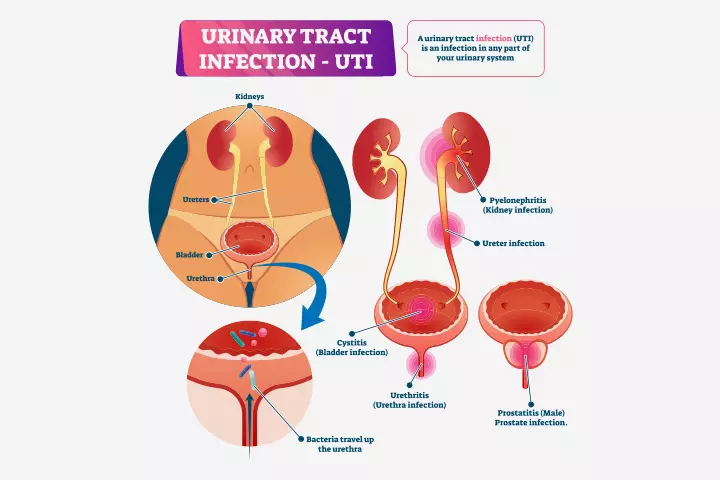
Escherichia coli (E. coli) bacteria cause about 90% of UTIs. They usually migrate from the anal region or the skin to the urinary system, resulting in bladder infection (cystitis) (1) (2). Vesicoureteral reflux (backflow of urine from the bladder to kidneys) may cause kidney infection (pyelonephritis) (2).
Girls have a higher risk of developing UTI than boys due to the anatomy of the urethra (2). Structural anomalies in the urinary system can be the causes of recurrent urinary tract infections in younger children. In teens and young adults, UTIs could be related to sexual activity than structural abnormalities.
Risk Factors Of Urinary Tract Infection In Teens
Most girls may have more than one urinary tract infection during a lifetime. The following factors may increase the risk of getting UTIs in women (2) (3).
- Anatomy of the urinary system: Girls have a shorter urethra than boys. This makes it easier for the bacteria to reach the bladder.
- Sexual activity: Teenage girls may have UTIs after sexual activity. Sometimes having a new sexual partner may cause UTI.
- Birth control methods: Usage of diaphragmsiThe large muscle located beneath the lungs that aids in breathing, passing of urine and stool, and prevention of acid reflux. and certain spermicidesiA chemical substance that destroys sperm and is used as a type of birth control. may increase the risk of UTI in girls.
- Not practicing proper toilet hygiene: Wiping from back to front may increase the risk of UTIs since bacteria from the anal area may reach the urethral opening.
- Poor water intake: Not drinking enough water can lead to dehydration in teens, which may increase the risk of getting UTIs, especially in girls and women. Water helps dilute urine and makes it harder for bacteria to grow.
The risk factors of urinary tract infections common for girls and boys are the following (4).
- Urinary tract abnormalities: Structural anomalies of the urinary tract may increase the risk of getting a UTI due to reduced urinary flow, back flow of urine to the urethra, etc.
- Urinary tract blockages: Kidney stones may block the flow of urine. Prostate enlargement could inhibit the flow of urine in boys.
- Low immunity: Teens with diseases and conditions that cause weak immunity may have an increased risk of UTIs since the immune system fails to fight against pathogens.
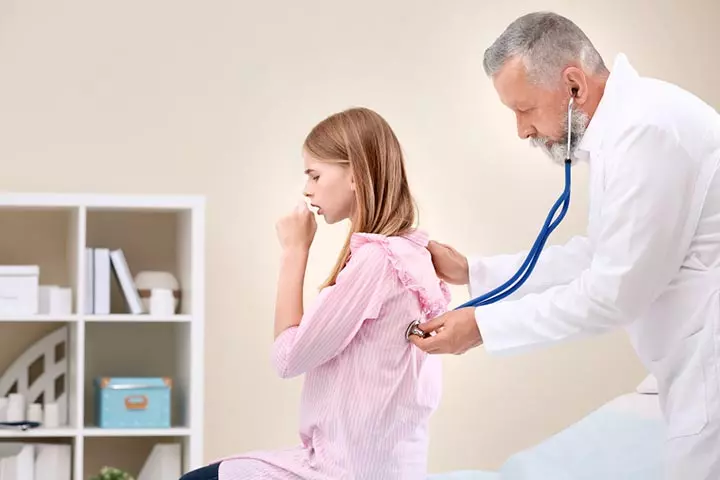
- Urinary catheterization: Teens who received urinary catheters during hospitalization or due to urological problems may be prone to UTIs (5).
- Urinary procedures: Urinary surgery or insertion of cystoscope may increase the risk of UTIs (6).
Although there is a risk of urinary tract infection following urinary procedures and surgeries, sterile methods of insertion and other prophylactic measures may decrease the risk of UTIs.
 Point to consider
Point to considerSymptoms Of Urinary Tract Infection In Teens
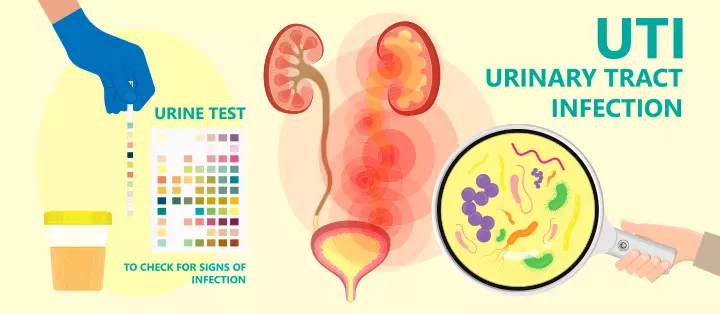
The following symptoms are seen in urinary tract infections (7).
- Fever
- Chills
- Dysuria (pain or burning sensation while urinating)
- Lower abdominal pain
- Urge to urinate frequently
- Nausea
- Vomiting
- Pain in the lower ribs, on the sides, or back
- Pelvic pain
- Cloudy or milky urine with a foul smell
An anonymous blogger talks about the signs they experienced with a UTI. They mention, “You know that feeling like your bladder is about to burst after you’ve already gone past the point where you were sure you couldn’t hold it anymore? I felt that all the time. It was constant. And whenever I did try to pee, it wouldn’t come. I would sit on the toilet for hours, feeling that pain, unable to pee, finally releasing a dribble that relieved nothing (i).”
Some chronic diseases may also cause dark-colored or cloudy urine with a foul smell. Urinalysis and urine culture may help diagnose these symptoms accurately.
When To Call A Doctor
Seek medical help if your teen has fever, chills, vomiting, or back pain as these could be symptoms of kidney infection. Call the doctor if the symptoms are not relieved through prescribed oral antibiotic treatment or recur within a few days.
 Be watchful
Be watchfulWhat Are The Long-term Concerns For Children With UTIs?
If left untreated, urinary tract infections may lead to complications in teens. The consequences of UTIs may include (8):
- Recurrent infections
- Acute or chronic pyelonephritis (kidney infection)
- Permanent renal scarring
- Boys may develop urethral stricture (narrowing), especially in the case of gonococcal urethritisiThe inflammation of the urethra caused by the bacteria Neisseria gonorrhoeae.
- Sepsis, a life-threatening condition due to an exacerbated immune system response to an infection
Diagnosis Of Urinary Tract Infection In Teens
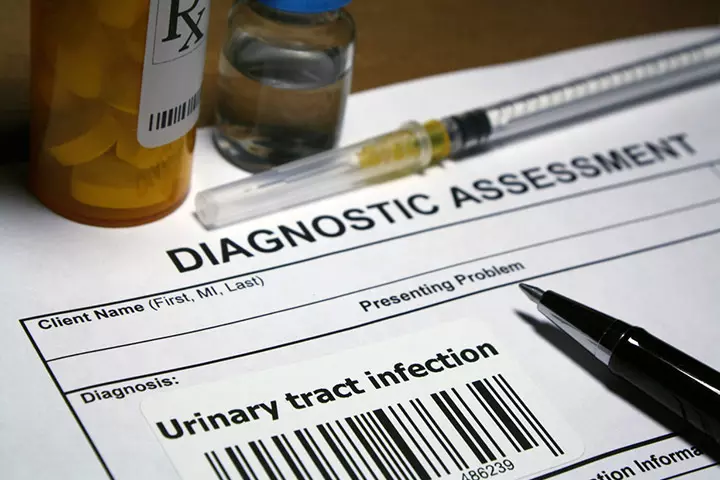
The diagnosis of urinary tract infection can be made using the following tests and procedures (9):
- Urinalysis: Urine sample analysis in the lab helps identify the presence of white blood cells, red blood cells, or bacteria in the urine.
- Urine culture: Bacteria causing UTI can be identified in urine culture, and this may also help identify effective medications and antibiotic treatments.
- Imaging of the urinary system: CT, MRI, or ultrasound may help visualize the urinary system. Imaging may help diagnose anatomical abnormalities and kidney stones.
- Cystoscopy: In this procedure, a thin tube is inserted into the urinary tract for visualization, especially in recurrent UTIs.
Treatment For Urinary Tract Infection In Teens
Antibiotic treatment is required to cure urinary tract infection in most cases. Your teen’s doctor may choose the type of antibiotic depending on the type of bacteria and your teen’s health condition.
Some may require pain medications to manage the burning sensation due to UTI. However, most teens may have pain relievers after initial doses of antibiotics.
Treatment for one or three days may be enough to treat minor infections. Simple or minor urinary tract infections are treated with the following medications (10).
- Ceftriaxone
- Keflex (cephalexin)
- Macrodantin or Macrobid (nitrofurantoin)
- Monurol (fosfomycin)
- Bactrim or Septra (trimethoprim/sulfamethoxazole or TMP/SMX)
More potent antibiotics are prescribed for complicated UTIs or pyelonephritis (kidney infection). FluoroquinolonesiAntibiotics widely used in the treatment of urinary, respiratory, and digestive tract infections. are usually prescribed for severe infections when the benefits outweigh the risks of complicated UTIs (10). The commonly prescribed fluoroquinolones are :
- Cipro (ciprofloxacin)
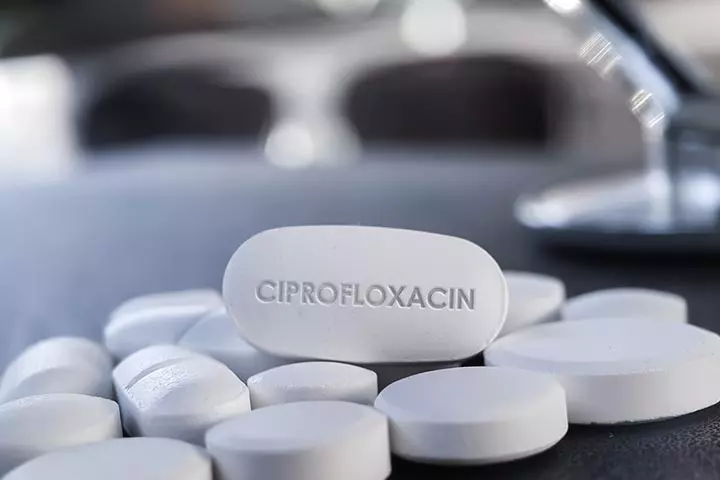
- Levaquin (levofloxacin)
The frequency of the infections may also determine the treatment options. Frequent infections may require long-term treatment, and your teen may have to take single-dose antibiotic therapy if UTI is associated with sexual activity. You may have to discuss with the doctor for the best treatment method, depending on the cause of infection.
Most teens get well in a few days of oral antibiotic treatment. However, your teen has to complete the prescribed course of antibiotic treatment to avoid future infections, even if they do not have any symptoms. Your teen may require hospitalization and intravenous (IV) antibioticsiAntibiotics injected or administered into the veins using a catheter. treatment in the case of severe UTI.
Home Remedies For UTI In Teens
Teens may complain of a burning sensation, pain, and discomfort if they have urinary tract infections. You may try some of the following home remedies to help reduce the pain until the infection is resolved (11).
- Drink plenty of water
- Drink cranberry juice or take cranberry tablets
- Eat probiotic foods containing lactobacillus
- Avoid alcohol, coffee, and soft drinks
- Place warm pads on the abdomen to ease pain
You may ask your teen girl to follow the below-listed tips during UTIs.
- Wear loose-fitting cotton inner wears
- Use sanitary pads instead of tampons if they have menstruation
- Take a shower, avoid bath and bath oils
- Avoid douching
 Quick tip
Quick tipHow To Prevent Urinary Tract Infections In Teens?
The following ways may help reduce the risk of urinary tract infections (12).
- Drinking plenty of water could help dilute the urine and remove bacteria from the urinary tract.

- Drinking cranberry juice may help prevent UTIs. Although there are minimal scientific studies to prove the efficacy of cranberry juice in UTI prevention, it is not harmful to try.
- Wiping from front to back may prevent bacteria from the anal region to reach the urethraliThe tube that carries urine and sperm out of the body. opening.
- Urinate and wash the vaginal area before and after sexual intercourse.
- Avoid using douches, powders, or deodorants in the genital area as they may irritate the urethra.
- Change birth control methods if they are the sources of infection in sexually active teens. Male condoms are better alternatives to prevent UTIs and other sexually transmitted diseases.
Frequently Asked Questions
1. Can a UTI go away on its own?
Although a mild UTI may clear up by itself without antibiotic treatment, experts don’t suggest ignoring the symptoms and waiting. The doctor may prescribe you medications and advise you to wait 48 hours to check if the symptoms subside by themselves (13) (14).
2. What can mimic a urinary tract infection in teens?
Conditions such as painful bladder syndrome, yeast infections, and sexually transmitted infections may be confused with or manifest as UTIs (15).
3. What is a silent UTI?
Silent UTI or asymptomatic bacteriuria does not manifest any symptoms of the infection and primarily affects women, pregnant women, older people, or immunocompromised adults (16).
4. Can I get a UTI from holding my pee?
Holding your pee can give way for bacteria to populate the bladder that is flushed out from the body with the urine, thus increasing the risk for UTI (17).
Urinary tract infections are common during adolescence, and more so in girls than in boys. They may occur due to insufficient water intake, kidney stones, bacterial infections, sexually transmitted infections, backflow of urine from kidneys, etc. If your teen complains of pain or a burning sensation while urinating, fever, nausea, or vomiting, they may have contracted a UTI and need medical attention. Untreated UTIs can have several side effects and lifelong complications. Hence, consult your doctor to determine the right course of treatment for your teen.
Infographic: Home Remedies For UTI In Teens
Urinary tract infections may occur due to incorrect toilet hygiene and are generally more common in girls. Various risk factors may contribute to an increased incidence of UTIs. The infographic below suggests some home remedies and tips that may help manage the symptoms of UTI until the infection resolves.

Illustration: Momjunction Design Team
Illustration: Urinary Tract Infections In Teens: Causes Risks & Treatment
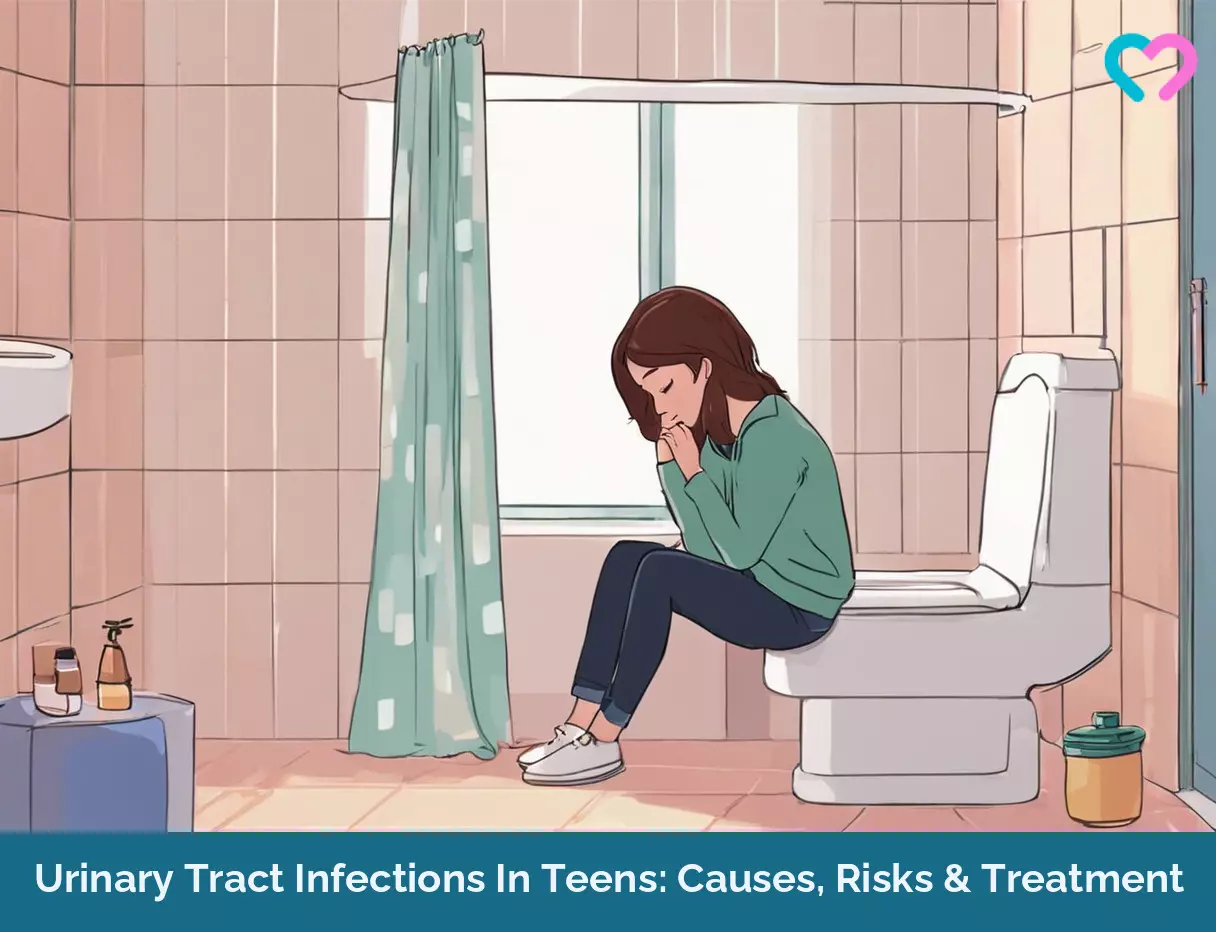
Image: Stable Diffusion/MomJunction Design Team
Personal Experience: Source
MomJunction articles include first-hand experiences to provide you with better insights through real-life narratives. Here are the sources of personal accounts referenced in this article.
i. A brief history of my urinary tract;https://sycastells.medium.com/a-brief-history-of-my-urinary-tract-2218e47f95b1
References
1. Helen S. Lee and Jennifer Le; Urinary Tract Infections; American College of Clinical Pharmacy (ACCP)
2. Urinary Tract Infections; University of California San Francisco
3. Urinary Tract Infections in Girls; Children’s Hospital of Orange County
4. Urinary Tract Infection Basics; Centers for Disease Control and Prevention
5. Catheter-associated Urinary Tract Infection Basics; Centers for Disease Control and Prevention
6. Cystoscopy – Overview; National Health Service
7. Urinary Tract Infections in Teens and Adults; C.S. Mott Children’s Hospital
8. Urinary Tract Infection – Causes, Complications, Treatment & More; Narayana Health
9. Ayan Sabih and Stephen W. Leslie; Complicated Urinary Tract Infections; The United States National Library of Medicine
10. Brett White; Diagnosis and Treatment of Urinary Tract Infections in Children; The American Academy of Family Physicians
11. Urinary tract infections (UTIs); National Health Service
12. Urinary tract infections (UTIs); Betterhealth; The Victoria State Government
13. Can a urinary tract infection go away on its own; Scripps Health
14. Urinary Tract Infections (UTI); NHS
15. What is a urinary tract infection?; Stanford Medicine
16. Asymptomatic bacteriuria; Medline plus
17. Why shouldn’t you hold you pee; Ridgecrest Regional Hospital
18. Prevent Urinary Tract Infections in Children; American Academy of Pediatrics
Community Experiences
Join the conversation and become a part of our nurturing community! Share your stories, experiences, and insights to connect with fellow parents.
Read full bio of Dr. Wayne Hough
Read full bio of Dr Bisny T. Joseph
Read full bio of Swati Patwal
Read full bio of Anindita Ghatak







